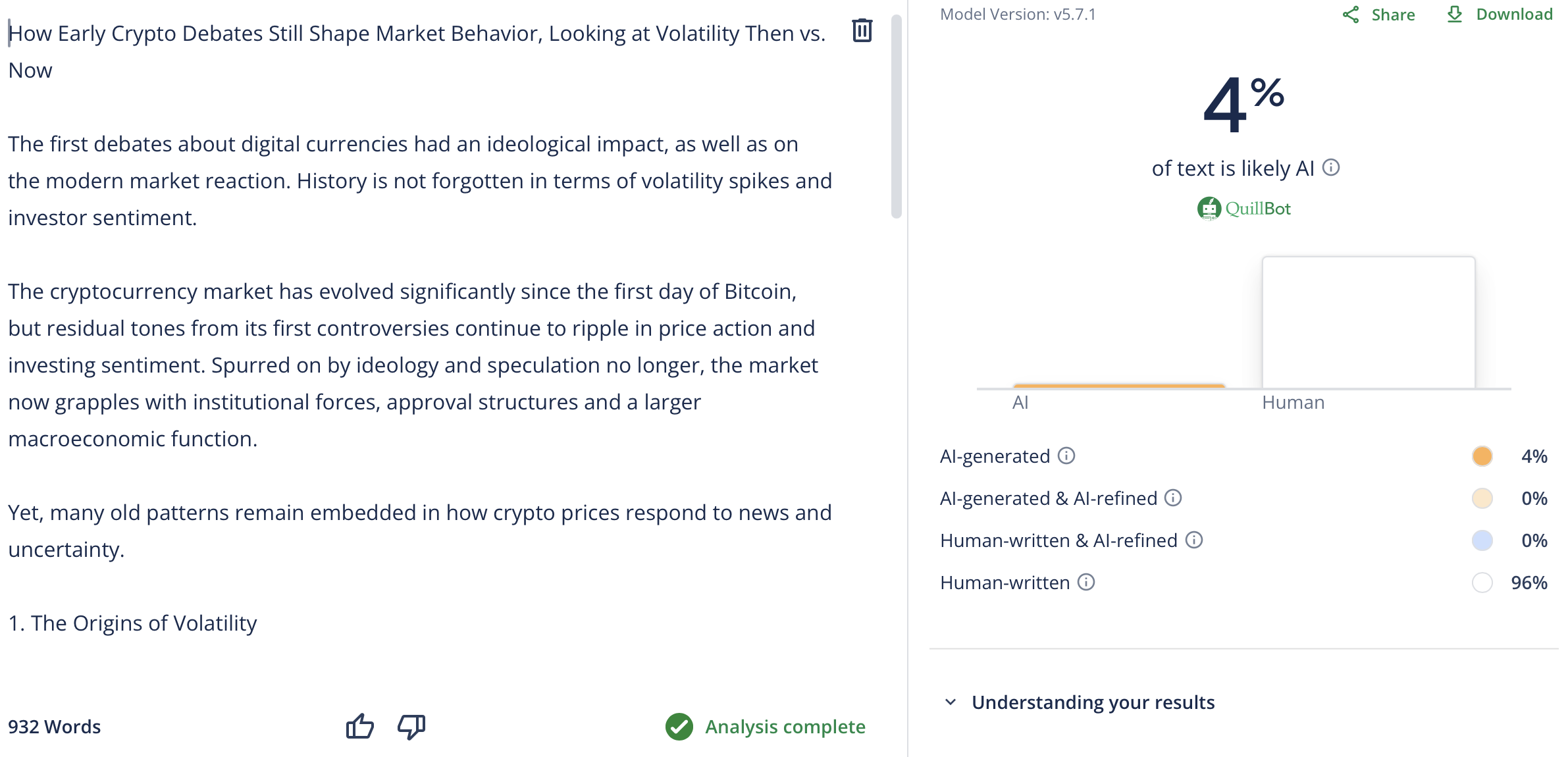The first debates about digital currencies had an ideological impact, as well as on the modern market reaction. History is not forgotten in terms of volatility spikes and investor sentiment.
The cryptocurrency market has evolved significantly since the first day of Bitcoin, but residual tones from its first controversies continue to ripple in price action and investing sentiment. Spurred on by ideology and speculation no longer, the market now grapples with institutional forces, approval structures and a larger macroeconomic function. Yet, many old patterns remain embedded in how crypto prices respond to news and uncertainty.
1. The Origins of Volatility
The early discourse on crypto was characterized by two opposing visions: digital gold and a decentralized network of payments. This division of ideology fuelled price conjecture and volatility, with dealers reacting angrily to accounts of which vision would prevail.
Bitcoin’s early price swings were dramatic. In 2013 the currency soared over 5,000% before crashing nearly 80%. While shocking at the time, such volatility created a culture of rapid boom-and-bust cycles that persists today.
According to Binance Research, the total crypto market cap has experienced periods when it lost more than $300 billion in a single week during major corrections. It is founded on the exaggerated reactions that so often follow a change in sentiment or regulatory changes that lie at the bottom of this habit.
As Yi He, Co-Founder of Binance, explains, “Crypto isn’t just the future of finance, it’s already reshaping the system, one day at a time.” That constant reshaping continues to influence how investors interpret market signals, often amplifying volatility in ways that echo the earliest days of digital assets.
2. Institutional Forces Redefining the Landscape
Whilst retail sentiment once propelled price action, institutionalisation is now more firmly determining market action. Statistics by the Binance virtual currency exchange reveal that institutional Bitcoin holding now stands at 19.8%, up from a mere 0.9% in 2014, a pervasive change in market configuration.
This institutional presence has tempered volatility but not erased it. Large players often rebalance portfolios based on macroeconomic signals, creating new patterns of rapid movement. For example:
- Seasonal trends: Bitcoin’s volatility varies yearly and is influenced by trading cycles, halving anniversaries and macroeconomic events.
- Macro sensitivity: Interest rate decisions and regulatory news now spark significant moves.
- Liquidity shifts: Institutional flows can amplify rallies or deepen corrections.
“Although volatility traders may see continued calm next month,” Binance analysts note, “October is also known for reversing September’s weakness.” The increased predictability reflects a maturing market but connects to early volatility cycles. That continuing fascination highlights how foundational discourses of scarcity and digital gold influence even the highest levels of behavior.
3. Cycles That Refuse to Die
Crypto, even with maturation, adheres to cycles that early adopters are accustomed to. One key story is the four-year cycle, which is rooted in Bitcoin’s halving cycles.
This cycle typically includes four phases:
- Accumulation: Low volatility, slow price growth.
- Bull run: Rapid appreciation as demand surges.
- Distribution: Prices peak, volatility spikes.
- Bear market: Corrections test long-term conviction.
“History suggests optimism,” Binance commentary states. “Bitcoin has posted gains in 9 of the last 11 Octobers.” Such consistency shows how deeply these early cycles are woven into the market’s DNA and how traders react according to patterns established over a decade ago.
4. Regulatory Evolution and Market Behavior
Previous debates also helped define how regulation affects market sentiment. Initial skepticism towards official oversight has been replaced by an appreciation that transparency can enhance confidence and entry.
Nowadays, acts like the CFTC testing tokenized collateral foretell a trend towards bringing crypto closer to traditional financial networks. That transition frequently necessitates volatility, yet the reaction becomes more measured and less panicked than strategic reshaping.
Regulatory clarity has also become a bullish indicator for institutional investors and a confirmation for retailers that crypto has long-term legitimacy. However, the optic to policy is a strong presence of the libertarian ideologies of the space launcher.
Catherine Chen, Head of VIP & Institutional at Binance, puts it succinctly: “Regulatory architecture is gradually aligning with the operational realities of digital asset markets, making long-term institutional adoption more viable.” This alignment reflects how far the market has evolved and how much those early ideological struggles still shape reactions today.
5. Old Lessons, New Realities
The debates that once defined cryptocurrency, freedom vs. regulation, store of value vs. payment network, are no longer philosophical footnotes. They’re embedded in how markets behave.
Although crypto has a new period of integration with traditional finance, the arguments that started it all still have a hand in it:
- Market psychology: Traders still overreact to narratives shaped a decade ago.
- Volatility: Early speculation patterns echo in today’s price swings.
- Adoption: Institutional participation reflects compromises between ideology and practicality.
As one Binance analyst said, “The traditional four-year market cycle is nearing the end of the bull run, but this time may differ.” That difference lies in how far the market has come and how much of its past it still carries forward.
Crypto’s Ongoing Legacy
The crypto market may be more mature, liquid and institutionally driven than ever, but its behavior remains profoundly shaped by the arguments that fueled its rise. Understanding those early debates isn’t just historical trivia; it’s key to understanding why crypto prices still move the way they do.
From ideological origins to institutional realities, the past is not behind crypto. It’s really built into its future, influencing everything from investor psychology to long-term cycles and guiding how the next chapter of digital finance will unfold.


